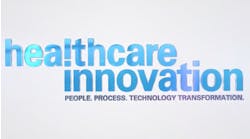Last week was the conclusion of the annual Radiological Society of North America (RSNA) in Chicago. The RSNA has always been an imaging-heavy affair, but this year it seems to have been afflicted with a dose of augmentation. While imaging is still the primary focus, it seems that radiology has awoken to the age of population health management and value-based care, and vendors are beginning to place greater emphasis on how imaging diagnostics can be augmented by artificial intelligence and machine learning.
Artificial Intelligence/Machine Learning
Everywhere you looked there were examples of how artificial intelligence (AI), or machine learning could improve the diagnostic capabilities of the radiologist. To be fair, most of these discussions emphasized “works-in-progress,” describing applications still in development. But it is evident that vendors are beginning to understand the reality of today’s environment, and they are actively pursuing ways to assist the radiologist.
In past years, there has been buzz about the prospects of AI displacing the radiologist for primary diagnosis. That seemed to be missing from this year’s meeting, with the primary emphasis on assisting the radiologist with AI/machine learning tools to make them more productive, or as some have coined it, “Augmented Intelligence.”
Most vendors seem to be struggling with how best to balance their own developments with those of third parties and academic centers through application program interfaces (API’s) or partnerships. This is refreshing, as in the past there has sometimes been a “not invented here” mentality amongst the vendors.
One major hurdle to be overcome is the Food and Drug Administration (FDA), as in the past the FDA has tended to require pre-market approval of new applications that involve patient image applications. The balance is trading off the fear that an application might adversely affect patient safety with the speed of getting such applications to market.
Workflow Orchestration
As providers continue to consolidate in this ever-changing healthcare environment, vendors continue to address how to accommodate reading imaging studies across multiple facilities, and multiple PACS (Picture Archive and Communications System). The most common approach to this has been to present the radiologist with an “enterprise” or “unified” worklist.
The typical approach to doing so is by means of rule sets for assignment of studies to a radiologist based on such parameters as the type of modality to be read, the shift they might be on, specific SLA’s (service level agreement) for determining the time interval within which a study must be read, etc. Vendors are applying AI/Machine Learning to worklists to more intelligently present the information to the radiologist to assist reading.
For example, some vendors are intelligently mining the EHR (electronic health record) for related patient and study information that might be relevant to the radiologist reading that study. Clinical, pathology, and surgery results might be made available to the radiologist to effect a more accurate and efficient diagnosis. Another novel approach to this is to intelligently present studies to the radiologist. For example, of the radiologist just completed reading an MRI of the knee, and there is another MRI of the knee waiting to be read. There may be benefit in forwarding this study next to the same radiologist to read.
Another approach might be to eliminate the worklist altogether. By means of AI/Machine Learning, it may be possible to consider a number of parameters in automatically presenting the next case to the radiologist, without a worklist of waiting studies.
While many vendors are experimenting with workflow orchestration, the reality is that many of the EHR vendors are encompassing this function into the EHR – the so-called EHR-centric PACS workflow. If the PACS vendors can demonstrate added value to intelligent worklists, they might be able to offset the worklist actually being the purveyance of the EHR vendor.
Clinical Decision Support
Efforts to grow the use of clinical support tools in the pre-authorization process are also coming to the forefront. Led by companies such as the National Decision Support Company (http://nationaldecisionsupport.com/), which is licensed to market the American College of Radiology’s (ACR) decision support criteria, more studies are being scrutinized by decision criteria at the time of the order.
Unfortunately, it seems as if most of the imaging companies don’t see a key role in this for them, choosing instead to work on “back-end” applications to assess appropriate use criteria (AUC). Most vendors are aware of the impending impact of the Protecting Access to Medicare Act of 2014 (PAMA) legislation that eventually will require physicians ordering certain imaging services to consult appropriate use criteria applicable to the imaging modality. However, the legislation has been pushed back in terms of implementation time frame. While PAMA will ultimately impact how studies are ordered, it will have more impact on the EHR vendors than the imaging informatics vendors according to several vendors.
Often overlooked is the value radiology can add via mechanisms to provide feedback from back-end diagnostic practices to the front-end decision support criteria, thereby adding value to decision support.
Cloud
The cloud is becoming more relevant to imaging, particularly with respect to augmenting applications. Rather than purchasing each AI application, it may be advantageous for providers to consider utilizing cloud-based services on a subscription basis, according to several vendors.
Google (https://www.google.com/intl/en_us/health/about/) has announced several relationships, the latest with Change Healthcare (https://www.prnewswire.com/news-releases/change-healthcare-announces-strategic-relationship-with-google-cloud-300561591.html) in which Change Healthcare will leverage Google’s cloud for image analytics.
Other
Another interesting trend is the transference of advanced imaging technologies down to the acquisition device, such as GE Healthcare’s (https://www.intel.com/pressroom/archive/releases/2009/20090402corp.htm) intent to embed Intel graphical processing capability within its imaging equipment for more rapid advanced visualization at the point of acquisition for more timely and productive decisions.
This is an exciting time for imaging! There is a growing need to provide greater interoperability with EHR’s, while at the same time utilize artificial intelligence/machine learning to enhance the diagnostic process. The radiologist isn’t quite extinct, and these developments will assure they have a role to play in healthcare’s future.


